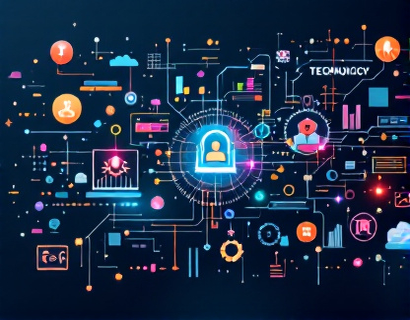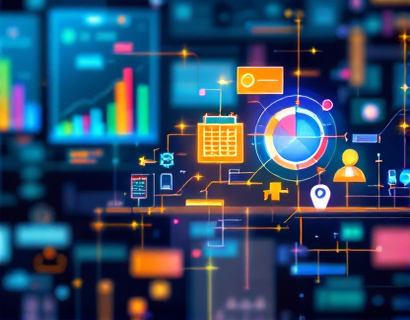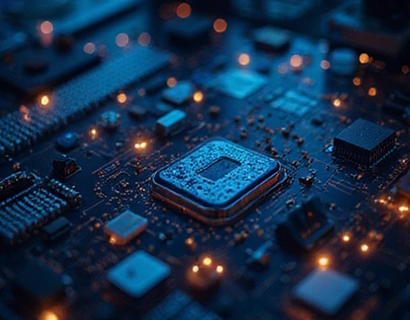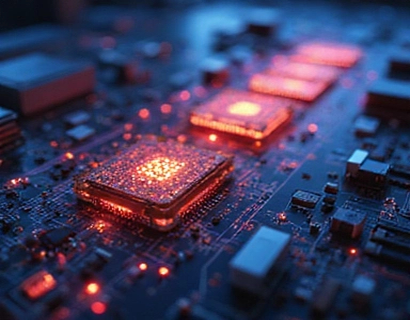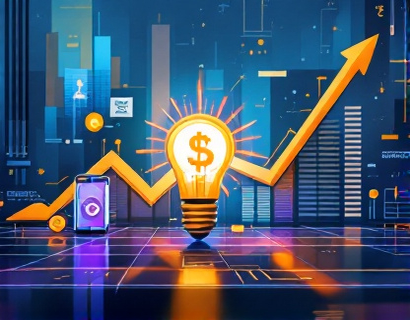Decentralized Innovation: Leveraging Crypto and AI for Next-Gen Digital Solutions
The intersection of cryptocurrency and artificial intelligence (AI) is giving rise to a new era of digital innovation, characterized by decentralized applications and AI-driven services that are redefining user experiences and engagement. This transformative landscape is not just a niche development but a fundamental shift in how we perceive and interact with digital technologies. For tech enthusiasts, early adopters, and digital innovators, understanding this convergence is crucial for navigating the future of technology.
At the heart of this revolution is the blockchain, a decentralized ledger technology that underpins cryptocurrencies. Blockchain's inherent transparency, security, and immutability make it an ideal foundation for building trustless and decentralized systems. When combined with AI, which excels in processing vast amounts of data to uncover patterns and make predictions, the potential for innovation becomes immense. This article explores how these technologies are being leveraged to create next-generation digital solutions that enhance user engagement and drive meaningful change.
Decentralized Applications: The New Frontier
Decentralized applications (dApps) are at the forefront of this technological fusion. Unlike traditional applications that rely on centralized servers, dApps operate on a blockchain network, distributing control and data across a network of nodes. This decentralization not only enhances security but also promotes transparency and user ownership. Users have direct control over their data and interactions, reducing the risk of data breaches and unauthorized access.
One of the key features of dApps is their ability to function without intermediaries. This means lower transaction costs and faster processing times. For instance, in finance, decentralized finance (DeFi) platforms offer a range of services such as lending, borrowing, and trading without the need for traditional financial institutions. These platforms use smart contracts, self-executing contracts with the terms directly written into code, to automate and enforce agreements.
The user experience in dApps is significantly enhanced by the integration of AI. AI algorithms can analyze user behavior and preferences to provide personalized recommendations and services. For example, a decentralized social media platform could use AI to curate content based on user interests, ensuring a more engaging and relevant experience. This synergy between decentralization and AI creates a powerful tool for building trust and fostering community engagement.
AI-Driven Services: Enhancing Digital Interactions
AI is not just a tool for dApps; it is also transforming traditional digital services by making them smarter and more intuitive. Chatbots, powered by AI, are becoming increasingly sophisticated, capable of understanding natural language and providing human-like interactions. In customer service, AI-driven chatbots can handle a wide range of queries, reducing response times and improving customer satisfaction. When integrated with blockchain, these chatbots can operate on a decentralized network, ensuring data privacy and security.
Another area where AI is making a significant impact is in data analytics. AI algorithms can process and analyze large datasets to extract valuable insights, which can be used to optimize business processes and enhance user experiences. For instance, in the healthcare sector, AI can analyze patient data to predict disease outbreaks and personalize treatment plans. When these insights are made accessible through decentralized platforms, they become more reliable and trustworthy.
AI also plays a crucial role in content creation and curation. AI-generated content, from articles to music and art, is becoming more prevalent. These creations can be stored and shared on decentralized platforms, ensuring that creators are fairly compensated and users have access to a diverse range of content. AI-driven recommendation systems further enhance the user experience by suggesting content based on individual preferences and behavior.
Enhancing User Engagement through Decentralized Rewards
One of the most compelling aspects of decentralized applications is the use of tokens and rewards to incentivize user participation. In a decentralized ecosystem, users can earn tokens for contributing value, such as providing data, participating in governance, or creating content. These tokens can be used within the platform or exchanged for other cryptocurrencies, providing a tangible reward for engagement.
AI enhances this model by personalizing reward systems based on user behavior and preferences. For example, an AI algorithm can analyze a user's interactions and reward them with tokens for activities that align with the platform's goals. This not only increases user engagement but also fosters a sense of community and shared purpose. Decentralized autonomous organizations (DAOs) take this concept further by allowing users to collectively make decisions and manage the platform's operations through token-based voting.
Challenges and Considerations
While the potential of decentralized innovation is vast, there are several challenges that need to be addressed. Scalability remains a significant issue for blockchain networks, with many platforms struggling to handle high volumes of transactions efficiently. However, ongoing developments in layer 2 solutions and new blockchain architectures are addressing these concerns, paving the way for more scalable and user-friendly decentralized applications.
Regulatory uncertainty is another factor that developers and users must navigate. As decentralized technologies grow in popularity, governments and regulatory bodies are beginning to take notice. Ensuring compliance while maintaining the decentralized ethos is a delicate balance. Transparency and adherence to best practices can help mitigate regulatory risks and build trust with users.
Security is paramount in decentralized systems. While blockchain itself is secure, the smart contracts and decentralized applications built on top must be carefully audited and tested to prevent vulnerabilities. AI can play a role here by identifying potential security risks and vulnerabilities through advanced monitoring and analysis.
The Future of Decentralized Innovation
The future of decentralized innovation is bright, with continuous advancements in both cryptocurrency and AI technologies. As more developers and organizations adopt these tools, we can expect to see more sophisticated and user-friendly decentralized applications. The integration of AI will continue to enhance these platforms, making them more intuitive and personalized.
One exciting area of development is the convergence of blockchain with other emerging technologies such as the Internet of Things (IoT) and 5G networks. This combination can lead to smarter, more interconnected systems that seamlessly integrate physical and digital worlds. For example, decentralized IoT networks can enable secure and efficient data sharing among devices, with AI handling complex data analysis and decision-making.
Another promising development is the rise of cross-chain interoperability, allowing different blockchain networks to communicate and transfer assets seamlessly. This interoperability, combined with AI-driven orchestration, can create a more unified and efficient decentralized ecosystem. Users will benefit from a more seamless and versatile digital experience, with the ability to interact across multiple platforms without barriers.
In conclusion, the fusion of cryptocurrency and AI is driving a new wave of digital innovation, characterized by decentralized applications and AI-driven services. These technologies are not only redefining user experiences but also fostering greater transparency, security, and user empowerment. As the landscape continues to evolve, staying informed and adaptable will be key for anyone looking to harness the full potential of this transformative era.








